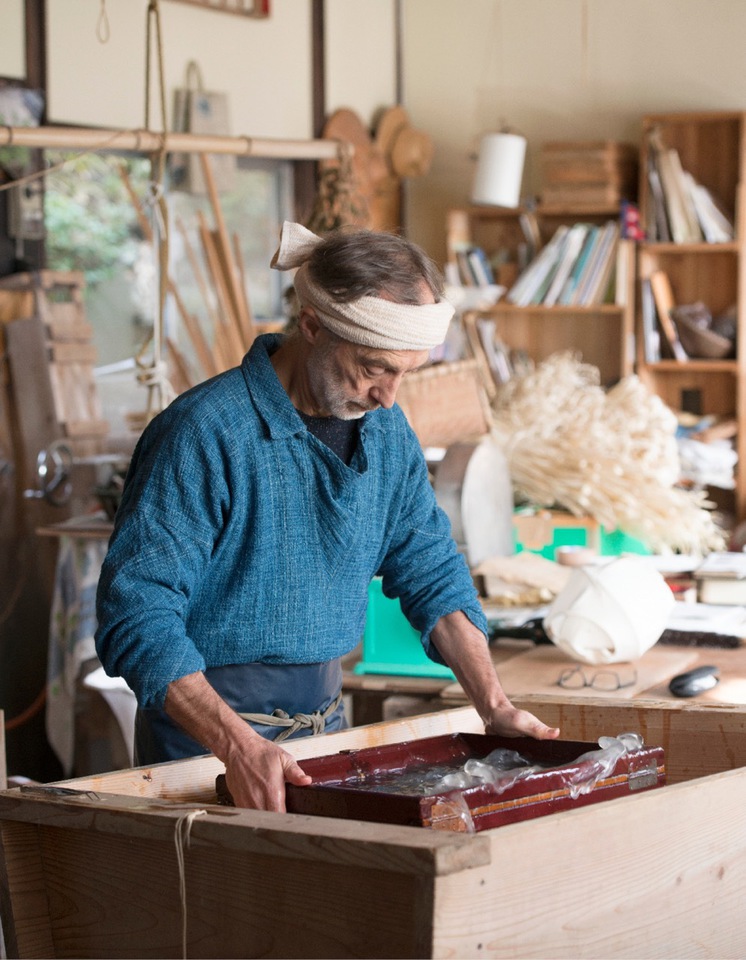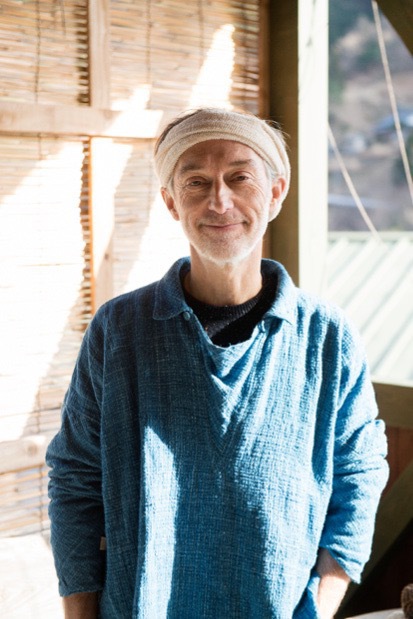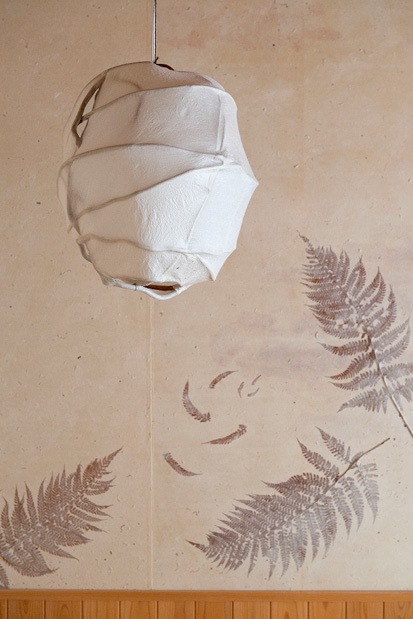Rogier Uitenboogaart
Born in The Hague, the Netherlands, in 1955.
After coming to Japan in 1980, he has spent thirty-five years making paper
by hand as a washi artist.
Handmade washi (Japanese paper) is admired for its unique texture and beauty all over the world. Drawn by its appeal, Rogier Uitenboogaart traveled from the Netherlands to Japan thirty-five years ago and has dedicated himself to making washi ever since. He works at his own studio in Yusuhara, a mountain community in Kochi Prefecture with just fifty inhabitants, and in 2007 he was certified as a master of traditional craftsmanship in the local certification program. Through exhibitions of his work and apprentice training, he is also working to share the magic of washi with others.
Uitenboogaart first encountered washi in 1980, when he was working at a bookbinding studio while studying modern art at an art university in Amsterdam. While examining a collection of binding samples, he discovered something that he had never seen before: traditional Japanese paper. “A new world opened up in the texture of the paper. If I held it up to the light, beautiful ethereal rays burst through into my vision and stirred my spirit.” He decided that he wanted to see a country where people lived in homes made of wood and paper. Six months later, he was heading east on the Trans-Siberian Railway.
After visiting washi studios around Japan, he studied how to make paper in Ino, Kochi Prefecture, for eleven years. In 1992, he moved to Yusuhara in the same prefecture, where the water is clear, the climate cool, the traditional mountain village culture remains, and established his own studio. He follows a basic policy of growing his own paper mulberry trees and mitsumata bushes for raw materials and using no chemicals, such as preservatives and bleaching agents. “I believe good paper can be made only when there is a connection with nature,” Uitenboogaart says. This is why he insists on sticking firmly to traditional methods.
It is also important to him to maintain an active relationship with the local people and community. He teaches children from area elementary schools to make washi, and every year the sixth-graders make the paper for their graduation certificates themselves. He has also worked with local people to grow and harvest mitsumata bushes.
In November 2014, the craftsmanship of traditional Japanese handmade paper was added to the UNESCO Intangible Cultural Heritage of Humanity list. Despite this global recognition of washi’s charms, Japanese people have less and less opportunity to encounter handmade paper in their modern lives.
“Even young people who know hardly anything about washi feel nostalgia and peace of mind when they touch a sheet of this paper. In itself, washi tells us of the relationship between humans and nature in ancient Japan, and I think that moves people’s hearts,” Uitenboogaart says. “Traditional papermaking consists of a series of processes completed by hand together with nature. Washi is made in dialogue with nature. Sometimes it goes well, and sometimes it doesn’t, but that shows learning doesn’t end and makes it fun.”

































































































































